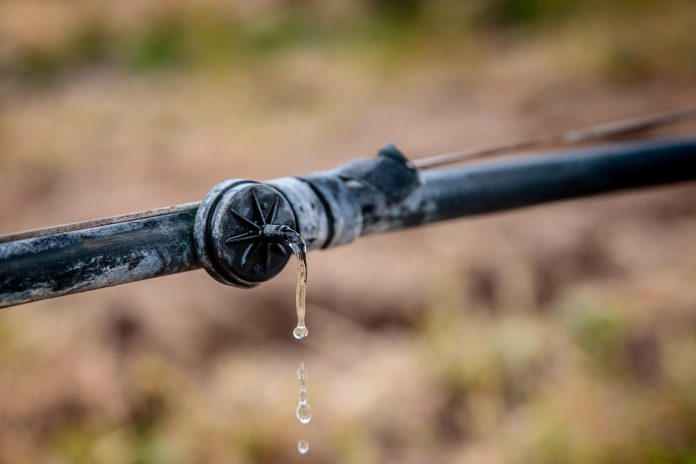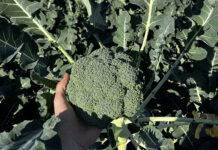
All throughout the wine grape world and across the U.S., wine grapes are grown on a variety of soil types and climates. AVA regions have started to be defined in places like Arizona where vineyards are thriving on challenging aridisol soils that can be difficult for Vinifera to thrive in comparison to other longer-established regions. Understanding the parts of the soil report and irrigation water quality have become paramount in understanding how to attain the highest level of viable production and maintain the healthiest soils.
It’s not uncommon for the focus of soil reports to center on one item in that report or look at results in a way that can detract from how to get to a fertility program that will serve the budget, crop and soil health most efficiently.
There are five items to look at in order on a soil report to obtain balance and increased overall soil health. It is important when obtaining soil reports to ask the lab you are working with to compute the Cation Exchange Capacity (CEC) and Base Saturation levels. I see a great deal of results from growers who come to my firm looking for recommendations that do not have CEC or base saturation levels defined. It’s impossible to make precise recommendations without these.
Irrigation Water Quality
Dryland-farmed vineyards don’t have this concern or need worry about the problems associated with irrigation water quality. However, if you are using irrigation to water, it’s important to know its quality and understand the pounds-per-acre concepts of potentially problematic minerals being applied. Normally, water is seen as clear and refreshing; not knowing what is contained in water and what normal usage brings is no different than shoveling on bicarbonates, salts, sulfates, boron and chloride directly on the crop. This is an important place where we can find the sources of issues constraining production and limiting soil health and balance.

Cation Balance
Cation balance is the most important component of a soil report. Many worry most about pH, but the pH will balance itself out when the specific issues are addressed in the soil. Depending on CEC, one should see Ca levels at 60% to 70%, Mg at 10% to 20%, K at 2% to 5%, Na at 1% to 4% and H at 5% to 10%. It’s important to fall back and understand Mulders Chart, realizing the antagonistic and synergistic relationship between minerals in soils. Identifying imbalances in mineral nutrition can lead to soling mysteries behind cropping outcomes. Cation balance is not overly difficult in most cases, granted it may be a situation where there is a two-to-four-year strategy to attain the corrections needed.
Phosphate Levels
In the southwest, there has been a feeling developed that it is okay to accept lower P levels and production will not be hindered. In other regions, P levels are normally very adequate. These lower levels of 10 to 25 parts per million (ppm) are widely accepted. It has been observed that controlled vigor and balance are attained when soil P levels are found in the 50- to 100-ppm range. Further observations show that as that number approached 100 ppm, there is improved plant health, controlled vigor and improved juice numbers. Delivering P can be challenging, but there are good conventional and organic ways to apply. It most likely serves best to look toward a dry program and have a three-to-five-year goal of building soil P to a level that is acceptable.
Organic Matter
In the desert southwest, I often don’t see organic matter (OM) levels above 1%. Ideally, 4% to 10% is acceptable. In certain regions, this may be a difficult level to attain. Further, in some regions, there can be an issue finding a compost source to help build soil OM levels. Leaning on dry leonardite sources and/or liquid humic additions can be ways to help build soil OM levels. Further, cover cropping and getting that green biomass back into the soil is another means to help build a healthy soil. Increasing OM levels increases CEC, buffers pH and helps nutrient uptake in the soil profile.
Sulfur, Boron, Chlorine and EC
Grapes are not incredibly tolerant of salts and subsequently can be severely hindered by excess amounts. Keeping sulfur, boron and chloride levels to a minimum is very important. Looking at CEC and Ca base saturation levels, one can find the levels acceptable. Keeping boron 1/1000 of Ca or not exceeding 4 ppm is critical to avoid toxicity, with sulfur being 1/3 to 1/2. P is an acceptable range. Cl should be one to two times Na by weight.
Soil health does in fact hinge on mineral balance in the soil. Balancing rations between soil minerals is key to allowing for optimal soil health in vineyards. These are simple ways to break down a soil report and what is maybe influencing it. It is important to spend the time, money and all-around effort to address mineral balance and the items discussed here prior to seeking certain products targeted for soil health.













